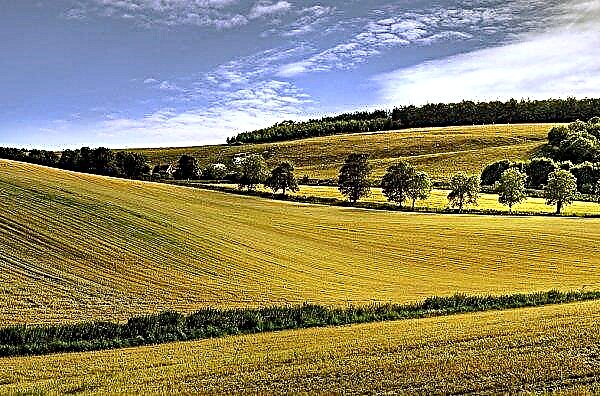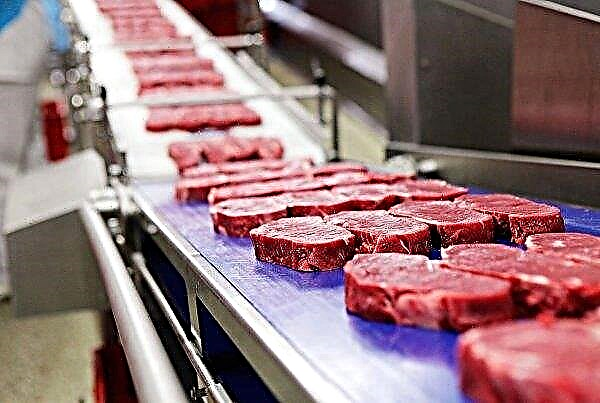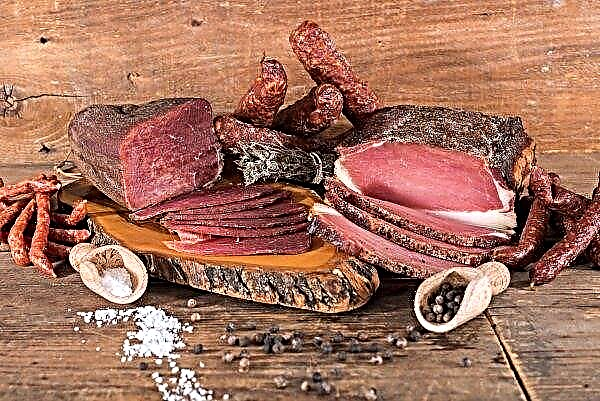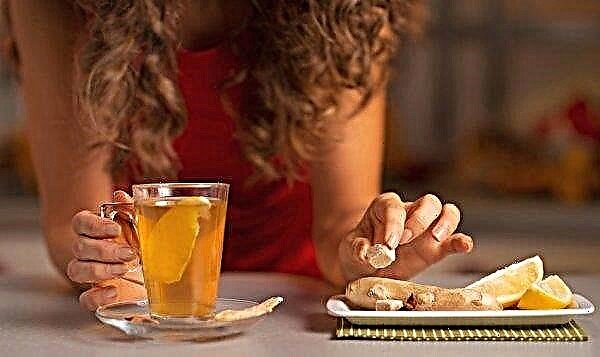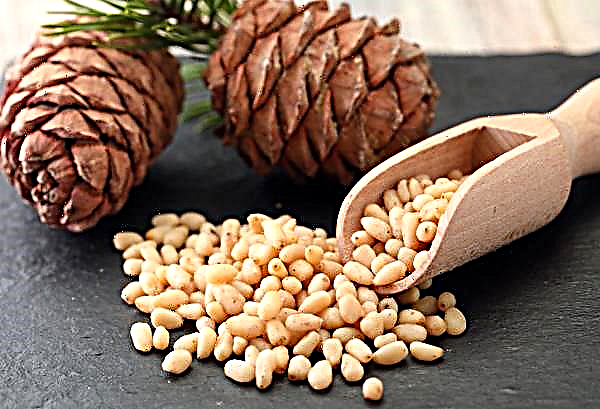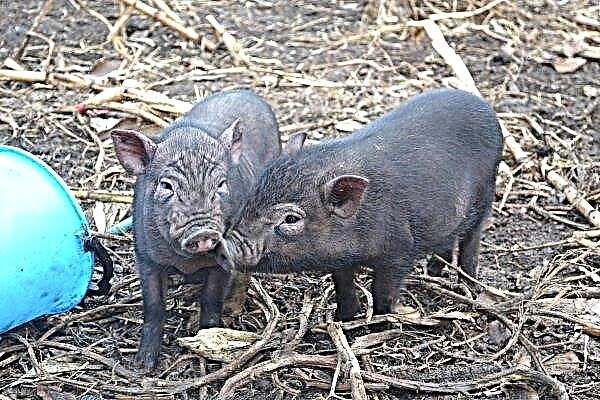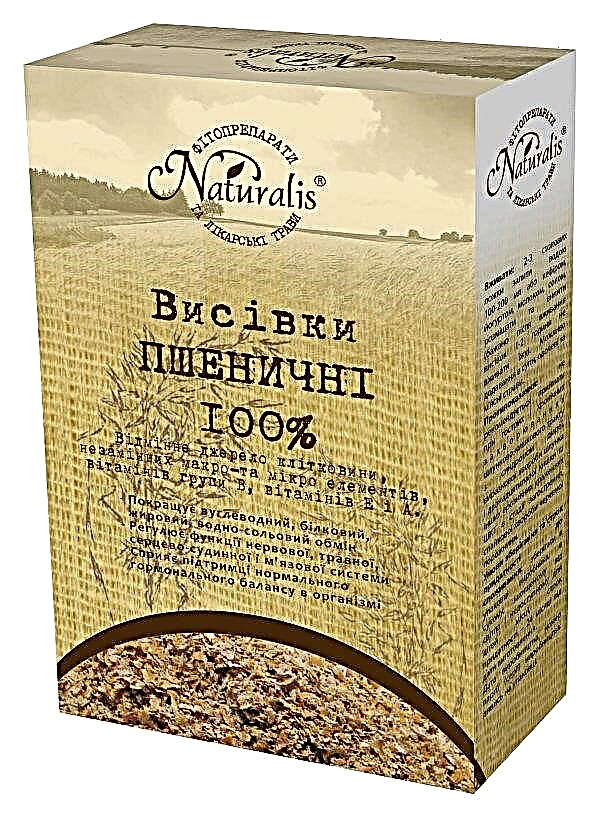A diet on such a simple and affordable product as buckwheat is a gentle option for losing weight. Nutritionists recommend not using express diets, because during them, losing weight is not due to getting rid of fat, but due to dehydration. After all, the first is removed the excess fluid. Therefore, a two-week diet on such a low-calorie product like buckwheat will be more effective. It is good if you need to lose extra pounds before traveling to the sea.
What can be the results of a diet
A buckwheat diet for two weeks helps to lose weight to 10 kg in a relatively short time. In order not to harm the body, it is recommended to sit on this diet no more than this time. This is due to the fact that during this period a person does not receive all the substances necessary for normal life activity.
Of course, the fight against weight is purely individual in nature. So, for someone, only 5–6 kg is extra, and for another, it is 20–30 kg. Therefore, the intensity of dumping excess weight is different for everyone. Such a diet itself provides for the consumption of up to 500 g of buckwheat porridge per day, but it is not uniform. Other low-calorie foods can be included in the diet with this porridge.
Did you know? Some odors send satiety signals to the brain. Those wishing to lose weight are recommended to inhale the aromas of mint, apples and bananas. They are good to use in food and chew slowly.
Such food is considered a more useful option than mono-diets. It should be noted that excess weight quickly leaves in the first 7 days, and after that the process of weight loss slows down. To consolidate the result, this diet is repeated after 5-6 months. Those who have successfully lost weight on this diet note an improvement in well-being and appearance, as well as skin and hair.
Video: Buckwheat Diet
The benefits and harms of buckwheat diet
Such unloading food has its pros and cons.
- On the one hand, this diet benefits:
- removes excess weight in a fairly fast time;
- with buckwheat, many beneficial elements (iron, calcium, manganese, zinc and so on) and vitamins (A, E, groups B, P) enter the body;
- thanks to her, lightness appears, her mood improves;
- excess water and slag are removed;
- metabolism is accelerated;
- this product has a positive effect on the pancreas and lowers blood sugar;
- the level of bad cholesterol decreases;
- reduced food costs.

- There are also negative aspects of such a diet:
- intestinal dysfunction (diarrhea or constipation);
- the body lacks many useful and necessary trace elements, especially glucose;
- may cause increased irritation, nervousness, sleep disturbance;
- the exclusion of salt leads to a water-salt imbalance;
- may cause anemia and lower blood pressure;
- raw buckwheat with kefir helps increase acidity in the body, and this can cause exacerbation of gastritis and peptic ulcer.
How to cook buckwheat for a diet
In order for the diet to bring only benefit and be as effective as possible, you need to properly prepare buckwheat porridge. This must be done so that all the useful elements of this product are fully preserved.
Important! It should be noted that you should not cook buckwheat in advance. Every day it should be fresh. Before use, rinse the cereal well, removing pop-up grains until the water is clear.
There are the following ways to cook it:
- Germination. For this purpose, they acquire green buckwheat, since brown grains will not work. The kernels of such buckwheat are laid in a suitable container (it is better to take a small tray) and pour warm water so that the grains are well moistened, but not too flooded. Lay gauze folded in several layers on top. It must be ensured that it does not dry out and, if necessary, moisten with a spray bottle. The pallet should be in a room temperature room. After a couple of days, the grains will begin to germinate, letting out green sprouts. As soon as they are visible, the grains are ready for use as food.
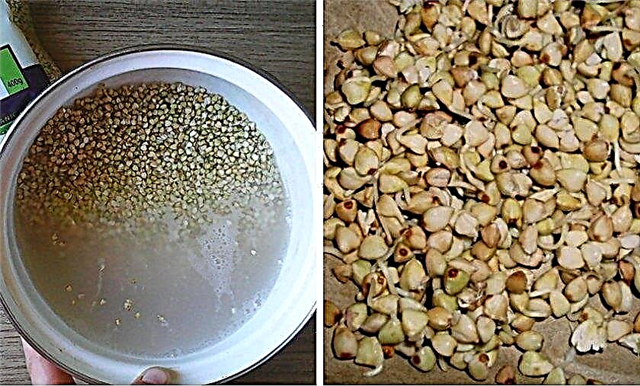
- Boiling. Simple brown buckwheat with a volume of 1 cup is poured with 300 ml of liquid and put on a quiet fire. When the water boils, keep on the stove for another 10-15 minutes. After this time, the pan with porridge is set aside, tightly closing the lid and insulated with a kitchen towel so that the cereal is softened. Salt and oil do not throw.

- In milk. Boiled buckwheat cereal in milk is prepared quite easily. To do this, 1 cup of cereal along with 350 ml of water and put on a quiet fire. After boiling hold for another 12-15 minutes, constantly stirring. After the liquid is drained and add 120-150 ml of skim milk. Again let it boil and hold for 5-7 minutes. Then cover the pan and warm.

- On kefir. 300 ml of low-fat kefir are poured into 200 g of cereal and mixed. Leave for the night. In the morning, it is divided into 5 servings and consumed over the next day.

- Steaming. Pour 250 ml of buckwheat with two glasses of boiled water, close and insist until swelling. If you brew in the evening, then in the morning porridge is ready. This procedure is best done with a thermos. In it porridge will be cooked in 40–45 minutes.

Daily diet menu
100–250 g of dry buckwheat, prepared by the recommended methods, is eaten daily. At first, the portions will be slightly larger, and in the following days it is recommended to reduce them. Vegetables and fruits are recommended for seasonal use. The last meal is recommended to be done 4 hours before bedtime. During the diet, exclude physical activity and drink a lot of water.
Important! If weakness or a headache is felt, then you can eat 1 tsp. honey. If this remedy does not relieve unpleasant health, then you should go out of the diet.
For the first week
The menu can be composed as follows:
- First day. Breakfast - buckwheat with tea and 1 teaspoon of honey. Lunch - vegetable soup. Snack - fruits or berries. Dinner - buckwheat with onions.
- The second day. Breakfast - buckwheat with a salad of vegetables. Lunch - milk soup. Snack - 200 ml of kefir. Dinner - porridge with an egg.
- The third to fifth day. Four times a day, they take buckwheat porridge steamed on kefir, drink a lot of liquid (2 l).
- Sixth day. Breakfast - buckwheat with coffee. Lunch - chicken broth with herbs. Snack - some dried fruits. Dinner - porridge with cabbage salad.
- Seventh day. Breakfast - buckwheat with sliced raw vegetables, tea without sugar. Snack - skim yogurt. Dinner - porridge with an egg.

For the second week
Menu example:
- First day. Breakfast - buckwheat, low-fat cottage cheese and tea. Lunch - 100 g of lean boiled meat and vegetable salad. Snack - fat-free kefir. Dinner - buckwheat with sliced raw vegetables.
- The second or fourth day. Four times a day they eat buckwheat steamed on kefir, washing it down with a large amount of liquid.
- The fifth day. Breakfast - cereal with a little olive oil and coffee. Lunch - vegetable soup. Dinner - buckwheat with low-fat hard cheese.
- Sixth day. Breakfast - buckwheat with dried fruits, green tea. Lunch - lentil soup. Snack - low-fat kefir or yogurt. Dinner - porridge with stewed mushrooms and vegetables.
- Seventh day. Breakfast - buckwheat, cottage cheese, tea without sugar. Lunch - a lean meat broth with greens and an egg. Snack - low-fat yogurt and 50 g of nuts. Dinner - buckwheat with vegetables and 100 g of lean boiled meat.

What foods can I eat with a diet
Buckwheat has a rich composition, but it does not contain all the compounds required by the body. Therefore, the diet during weight loss is supplemented with low- and low-calorie foods.
It is best to include such food in the menu during a buckwheat diet:
- Vegetables. You need to stop your attention on cucumbers, tomatoes, carrots, all kinds of cabbage, radishes, asparagus, pumpkin, greens. They can be eaten raw or boiled. But potatoes should be excluded.

- Fruits and berries. You can consume apples, pears, citrus fruits, apricots, kiwi, strawberries, blackberries, blueberries, gooseberries, currants and raspberries in limited quantities. It is allowed to bake apples, but without sugar.

- Dairy products. You need to stop your attention on low-fat kefir, cottage cheese, milk.

- Meat. Must be lean. Best suited chicken or turkey fillet, rabbit, lean beef.

- Fish. You should focus on low-fat varieties (for example, pike perch, cod, pike, flounder). It is better to cook or stew.

- The eggs. They are an excellent source of many necessary substances and are allowed for use.

- Mushrooms. They contain few calories and at the same time go well with buckwheat. For example, the calorie content of champignons is only 27 kcal / 100 g and gives a feeling of satiety.

- Sugar-free drinks. You need to consume enough fluid. You can drink water, tea or coffee. It is good to drink herbal teas with mint, rosehip or lemon balm, fresh juices.

- Porridge. The diet can also be supplemented with other low-calorie cereals (rice, corn or oatmeal). It is good to alternate them with buckwheat. It is permissible to consume a small amount of dried fruits and very few nuts. Just do not abuse them. Since they are high in calories.

How to get out of a diet
Other, more familiar foods need to be returned gradually. The transition period usually takes twice as much time as the diet and takes 4 weeks. Small portions (50–100 g) are beginning to be supplemented with potatoes, pork, salt, confectionery, and other cereals.
Did you know? The word diet came from the Greek language and translates as "diet", "lifestyle." Even in antiquity, the ancient Greek athletes ate meat and refused foods containing carbohydrates.
In order not to gain weight again, you should continue to limit yourself to fatty and sweet foods, flour products, canned goods, sausages, sweet soda and alcohol, and even better - completely abandon them and monitor calories. It will be good to maintain fractional nutrition and small portions. Do not eat at night and overeat. You should follow the principles of good nutrition and move more.
During the diet, it is good to do such cosmetic procedures as anti-cellulite wraps and baths, massages. In the period of exit from it, you can give yourself feasible physical activity, and after two weeks - return to your usual activities. If you didn’t burden yourself with sports before the diet, then it's time to start doing it, or at least take the time to walk.
Important! At the slightest health problems before a diet, you should consult your doctor and nutritionist. If during it there were side effects in the form of weakness, constipation (diarrhea), rash and others, then you should cancel it and seek medical advice.
Diet contraindications
- Buckwheat diet is monotonous and sitting on it for a long time is not recommended. She has contraindications:
- pregnancy and lactation;
- age up to 14 years and from 65 years;
- diabetes;
- buckwheat hypersensitivity;
- problems with the central nervous system;
- chronic diseases of the digestive system (gastritis, ulcers, hemorrhoids, liver and pancreas diseases).

In two weeks, a buckwheat diet can lose weight up to 10-12 kg. It is not a rigid mono-diet and allows the use of other low-calorie foods. You should leave it gradually and adhere to a balanced diet so as not to gain weight again.
Reviews
with this diet, kefir is still needed, I still ate more tomatoes and cucumbers. I sat for a week or 2, was slender, and of course I went to the gym 5 days a week for intensive training.

















